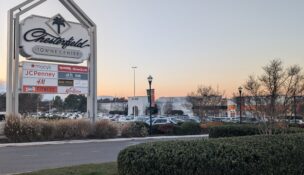Precision farming
Virginia farmers use technology to improve efficiencies.
Precision farming
Virginia farmers use technology to improve efficiencies.
The Vanderhyde Dairy is proof that the U.S. Capitol isn’t the only building in our country powered by manure.
Bad jokes aside, the third-largest dairy in Virginia is also the only one in the state selling power generated by the methane gas from cow manure. Since August 2010, the Chatham dairy farm’s methane digester has been producing about 300,000 kilowatts per month — enough to power more than 100 homes. The dairy sells the electricity to Dominion Virginia Power.
The methane digester is just one example of the many new technologies implemented on Virginia farms during the past few years, as the state’s farmers modernize to cut costs and increase efficiencies.
When the price of milk is low, “the margins are so slim that we use the technology to make sure there isn’t another margin we can squeeze. We have no control over what we get paid for the milk, so we have to do everything on the cost side,” says Roy Vanderhyde, whose family has operated their dairy in Virginia since 1980.
The Vanderhydes paid for the $3 million digester system with the help of matching grants from federal, state and local government agencies. They had hoped it would be a major generator of revenue in addition to providing electrical power, but the purchase price for power fell below expectations because of the drop in natural gas prices.
“It’s breaking even. We’re not making nearly the money we were hoping,” Vanderhyde says. “It’s sad because the system is so efficient. It takes 3,000 kilowatts a month to make the system work to generate 300,000. You’re not going to find renewable energy with those kinds of returns any better than that.”
If he had to do it over, Vanderhyde says, he would use the system just to power his own farm, but then he wouldn’t have been eligible for grant money. The digester does pay other dividends, however. It’s also a source of cheap bedding materials for the farm’s 2,300 cows, and it creates virtually odor-free fertilizer, which his neighbors appreciate.
The Vanderhyde Dairy has had better luck with implementing GPS technologies to help monitor its 2,000-acre crop fields, as well as robotic feeders that determine precisely how much each cow is eating to ensure that feed isn’t wasted.
“We feed 1.5 million pounds of feed per week to the cows. If you’re off by 1 percent, that can be $700 or $800 a week in feed overages, so you have to keep a close eye on that,” Vanderhyde says.
Robotic milking
Robotic milking and feeding is now a major part of operations at Ingleside Dairy Farm in Lexington, which has been in the Leech family since the 1700s.
In February 2012 the family installed the first widespread robotic milking system at a Virginia dairy. About 240 cows are milked on the farm using the automated system. Each cow wears a collar with a digital transponder. When it approaches the robotic milker, the system finds the cow’s udder and attaches the milking apparatus using a 3-D camera and laser technology.
As the cows are milked and go about their daily business, the system tracks a wealth of data, ranging from the protein and butter fat contents of each cow’s milk to how much a cow walks or chews.
“You could probably sit at the computer all day reading reports,” says Linda Leech, who runs the farm with her husband, Charlie, and their adult children, Beau and Jennifer. “It gives you so much information about every individual cow.”
The system even can predict when a cow goes into heat, letting the farmers know the optimal time for breeding the cow. The system also alerts farmers if a cow is showing signs of illness, such as eating less or producing less milk. It will automatically quarantine a suspect cow into a holding pen so the farmer doesn’t have to seek it out.
Alerts such as these can be delivered via smartphone to farmers in the field. The Leeches, however, aren’t able to take advantage of that feature, Linda Leech says, because “we don’t have very good cell service at all where the farm is located.” Reliable high-speed Internet is also a problem. She’s heard the county is working on upgrading the local communications infrastructure, but it could be another year or more before it is ready.
Since installing the system, Leech says, the dairy has had to hire far fewer workers than it did just two years ago. The business also has increased output significantly. The farm can muster the manpower to milk a cow only once or twice a day. With the robotic milker, however, the cow goes to the milker when it wants to be milked, sometimes as much as five or six times in a day. The cows quickly get used to the robotic milker and actually prefer it, Leech says, because it’s a quieter and calmer experience for the cow than being milked by humans. The cow also receives special feed pellets as a reward.
GPS in the fields
Crop-growing farms are also upgrading their technology.
Farmers are employing GPS-directed auto-steering tractors and combines to ensure that rows don’t overlap or create gaps. The technology also ensures farmers don’t plant more seed than necessary, an important cost-saving measure when corn seed can cost $250 for a bag that covers three acres.
Bobby Grisso, associate director of the Virginia Cooperative Extension Service, estimates that about 25 percent of Virginia farmers now use some form of GPS technology in their planting. The extension service’s field agents employ GPS to identify problem areas in a field or to simply locate farms in remote areas.
“Almost all these technologies have a quick payoff because most Virginia farms are irregular-shaped fields and rolling terrain that has a lot of field variation within it,” Grisso says. He notes that farmers also use a variety of technology from computers to smartphone apps to track weather changes and commodity prices.
Paul Davis, who retired in 2009 as Virginia Extension Service agent for New Kent County, helps farmers target their nitrogen fertilizer more efficiently and get bigger crop yields with the help of Green Seeker sensors. Mounted on self-propelled sprayers, the sensors, which are about the size and shape of a 12-inch ruler, read the reflection of infrared light off plant life to determine the greenness of the crops below.
The sensors use algorithms developed at Virginia Tech to determine a healthy level of green for a particular crop. With a grant from the Natural Resources Conservation Service to the local soil and water conservation district, Davis lets local farms use the technology for free on their corn and wheat crops.
“Precision [agriculture] is really booming right now with [crop] commodity prices being high,” Davis says. “The farmers are spending money on this technology now that they’re making something. They’re upgrading not only their equipment but their technology.”
F
















